Xylophanes ockendeni
Xylophanes ockendeni courtesy of John Vriesi.
This site has been created by Bill Oehlke. Comments, suggestions and/or additional information are welcomed by Bill.
TAXONOMY:
Family: Sphingidae, Latreille, 1802 |
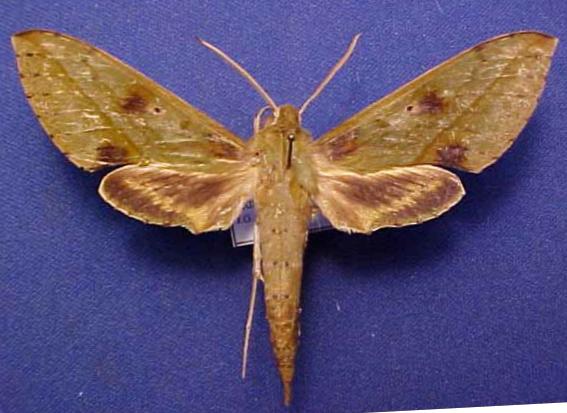
Xylophanes ockendeni courtesy of John Vriesi.
This site has been created by Bill Oehlke. Comments, suggestions and/or additional information are welcomed by Bill.
TAXONOMY:
Family: Sphingidae, Latreille, 1802 |
San Remon (Ramon) is in the Chanchamayo Province of the Junín Region, on the eastern slopes of the Andean Cordillera Oriental in Peru. It is situated at an elevation of 770m above sea level. This is supposedly the HT location for ockendeni.
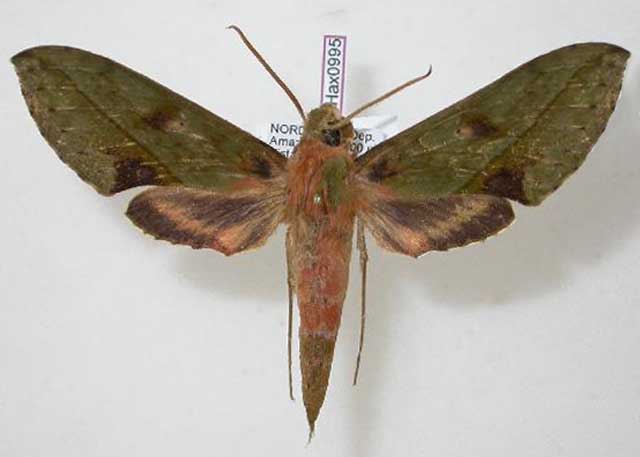
Xylophanes ockendeni, 85mm, Amazonas, Peru,
courtesy of Jean Haxaire, slight digital repair by Bill Oehlke.
The abdomen has a thin, brown dorsal line, on either side of which is a row of small black spots, one on the posterior edge of each tergite.
The underside of the abdomen has a lavender-red coloration.
This species has a forewing upperside most similar to Xylophanes macasensis, but the ground colour of ockendeni is a deeper, darker, more bluish-green, on which the darker markings are less prominent, making the whole moth look more drab. The postmedian line is brownish, sinuate, less conspicuous and more poorly defined, distally blending in with the ground colour. The area around the discal spot is paler than in Xylophanes macasensis, rendering the spot more conspicuous. The submarginal line is represented by a series of small, dark vein spots. CATE
Xylophanes ockendeni sensu Eitschberger, flies in Cusco, Peru.
The specimen referred to as Xylophanes ockendeni sensu Eitschberger is also very Similar to Xylophanes rothschildi ... as
Xylophanes ockendeni from Vista Alegre and Aguas Verdes, Amazonas Department, Peru. However, the male ... holotype of Xylophanes ockendeni,
in the BMNH, was collected not in northern Peru but in ÔÇ£Santo Domingo ...
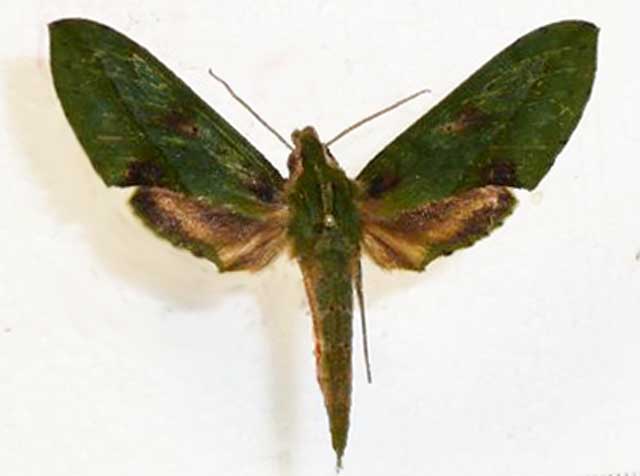
Xylophanes ockendeni, 74mm, Cusco, Peru, 1850m,
courtesy of Tomas Melichar, slight digital repair by Bill Oehlke.
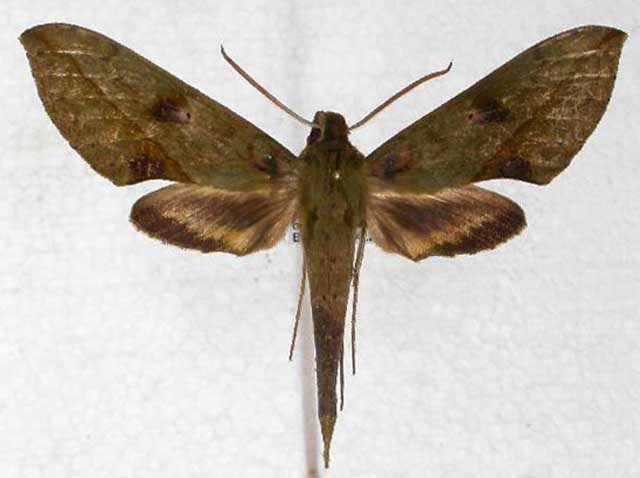
Xylophanes ockendeni, 82mm,
courtesy of Ulf Eitschberger, slight digital repair by Bill Oehlke.
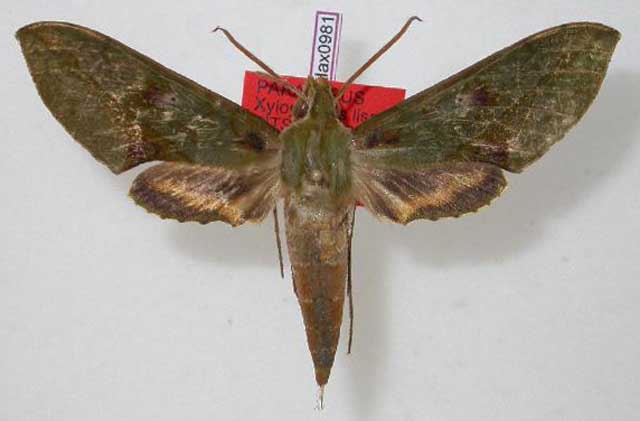
Xylophanes ockendeni, Peru,
courtesy of Jean Haxaire, slight digital repair by Bill Oehlke.
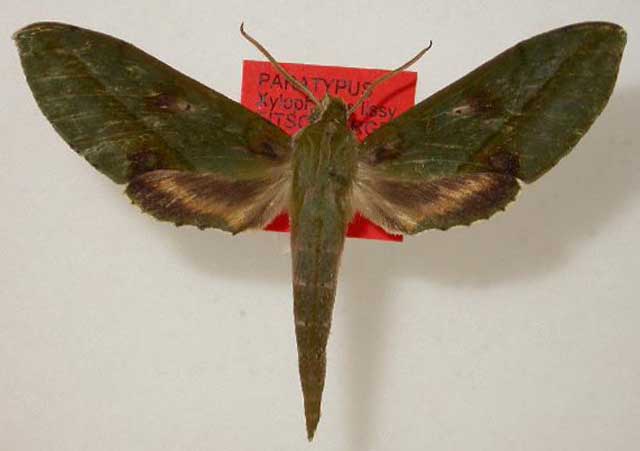
Xylophanes ockendeni, Peru,
courtesy of Jean Haxaire, slight digital repair by Bill Oehlke.
Moths emerge approximately one-two months after larvae pupate.
Use your browser "Back" button to return to the previous page.
Goto Main Sphingidae Index
Goto Macroglossini Tribe
Goto Central American Indices
Goto Carribean Islands
Goto South American Indices
Goto U.S.A. tables